Old Maps of Egypt
Browse through our collection of Old Maps of Egypt.
Egypt is a transcontinental country located in the northeast corner of Africa and the southwest corner of Asia. With a population of around 100 million inhabitants, Egypt is the 14th most populated country in the world. The capital of Egypt is Cairo. Egypt is a country with some of the longest recorded history in the world, dating back to the 6th–4th millennium BCE. Some of the earliest developments of centralized government, agriculture, writing, urbanization, and organized religion were all found within Ancient Egypt. Ancient Egypt was also home to one of the world’s first urban and literate societies. Egypt is also home to the Giza Necropolis, which is the only one of the Seven Wonders of the World to still exist.
The landscape of Egypt is dominated by the Nile River, which stretches for around 1,200 kilometers (or 750 miles). Because of its hot, dry, and sunny climate, a great majority of Egypt is desert. The Eastern Desert of Egypt covers around one-fourth of the entirety of Egypt’s land, while the Western Desert covers about two-thirds of all land. In fact, 99% of the total population uses just about 5.5% of all the land area in Egypt that is liveable. Most of these inhabitants are located around the coastal strip of the Nile River. However, climate change poses a threat to these citizens, as rising sea levels could cause flooding, and turn many into environmental refugees.Despite a total lack of precipitation all throughout the country, Egypt is a relatively biodiverse country with great amounts of varied vegetation and animal life found all throughout the country. Some examples of domestic animals found in Egypt are buffalo, camels, donkeys, sheep, and goats. Goats are especially common in the Egyptian countryside. Some animals commonly found in the desert are the Dorcas gazelle, fennecs, Egyptian hares, as well as two kinds of jerboa. Within Egypt, there are 2,426 species of plant, 1,483 species of algae, and more than 627 species of fungi.
Egypt’s economy relies mostly on coal, oil, natural gasses, and hydro power, which are all natural resources. The dependence on these natural resources has started to cause stress on the economy, as a growing population and limited land all pose a threat. Tourism also plays a key role in Egypt’s economy. In 2008, more than 12.8 million tourists visited, which generated about $11 billion in revenue. In fact, about 12% of the workforce works within the tourism sector. Egypt is considered a diversified economy, and has the third-largest economy in Africa, and the 33rd largest economy by GDP.
Egypt is the most populated country in the Arab world. The country experienced a large and rapid population growth from the 1970s until the 2010s, which is because of both medical and agricultural advancements, which were all a part of the Green Revolution. These improvements in health care helped decrease Egypt’s infant mortality rate well below the world average. The population of Egypt is relatively young, with around a third of the country’s population being under the age of 15 and about three-fifths of the population being under 30.
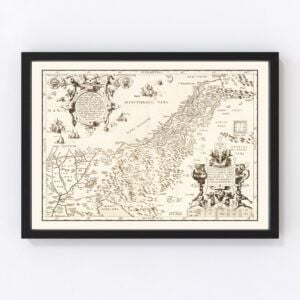
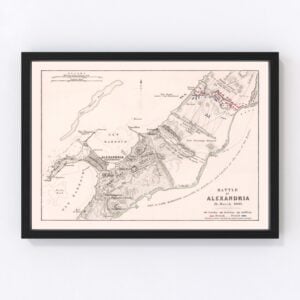
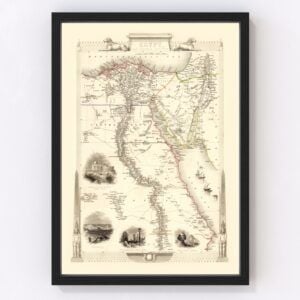
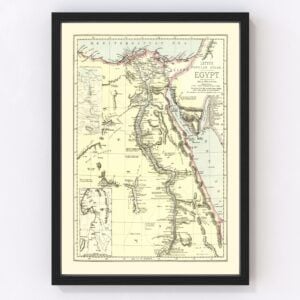
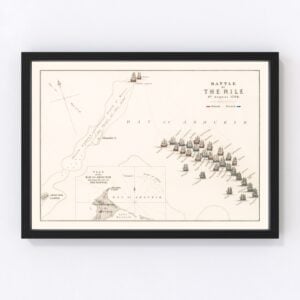
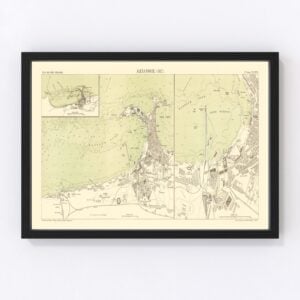
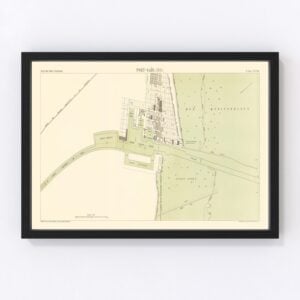
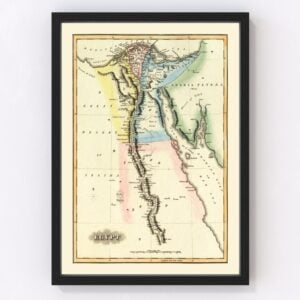
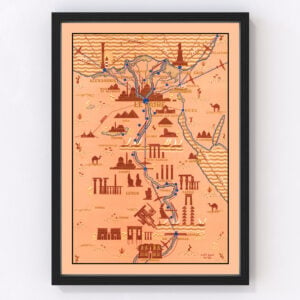
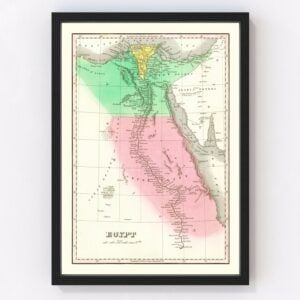
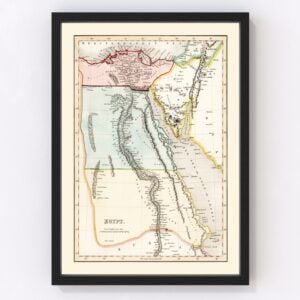
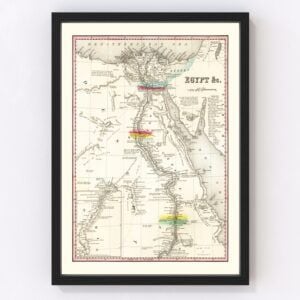
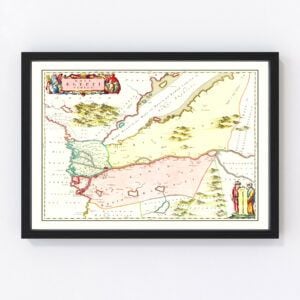
Old Maps of Egypt
Browse through our collection of Old Maps of Egypt.
Egypt is a transcontinental country located in the northeast corner of Africa and the southwest corner of Asia. With a population of around 100 million inhabitants, Egypt is the 14th most populated country in the world. The capital of Egypt is Cairo. Egypt is a country with some of the longest recorded history in the world, dating back to the 6th–4th millennium BCE. Some of the earliest developments of centralized government, agriculture, writing, urbanization, and organized religion were all found within Ancient Egypt. Ancient Egypt was also home to one of the world’s first urban and literate societies. Egypt is also home to the Giza Necropolis, which is the only one of the Seven Wonders of the World to still exist.
The landscape of Egypt is dominated by the Nile River, which stretches for around 1,200 kilometers (or 750 miles). Because of its hot, dry, and sunny climate, a great majority of Egypt is desert. The Eastern Desert of Egypt covers around one-fourth of the entirety of Egypt’s land, while the Western Desert covers about two-thirds of all land. In fact, 99% of the total population uses just about 5.5% of all the land area in Egypt that is liveable. Most of these inhabitants are located around the coastal strip of the Nile River. However, climate change poses a threat to these citizens, as rising sea levels could cause flooding, and turn many into environmental refugees.Despite a total lack of precipitation all throughout the country, Egypt is a relatively biodiverse country with great amounts of varied vegetation and animal life found all throughout the country. Some examples of domestic animals found in Egypt are buffalo, camels, donkeys, sheep, and goats. Goats are especially common in the Egyptian countryside. Some animals commonly found in the desert are the Dorcas gazelle, fennecs, Egyptian hares, as well as two kinds of jerboa. Within Egypt, there are 2,426 species of plant, 1,483 species of algae, and more than 627 species of fungi.
Egypt’s economy relies mostly on coal, oil, natural gasses, and hydro power, which are all natural resources. The dependence on these natural resources has started to cause stress on the economy, as a growing population and limited land all pose a threat. Tourism also plays a key role in Egypt’s economy. In 2008, more than 12.8 million tourists visited, which generated about $11 billion in revenue. In fact, about 12% of the workforce works within the tourism sector. Egypt is considered a diversified economy, and has the third-largest economy in Africa, and the 33rd largest economy by GDP.
Egypt is the most populated country in the Arab world. The country experienced a large and rapid population growth from the 1970s until the 2010s, which is because of both medical and agricultural advancements, which were all a part of the Green Revolution. These improvements in health care helped decrease Egypt’s infant mortality rate well below the world average. The population of Egypt is relatively young, with around a third of the country’s population being under the age of 15 and about three-fifths of the population being under 30.
